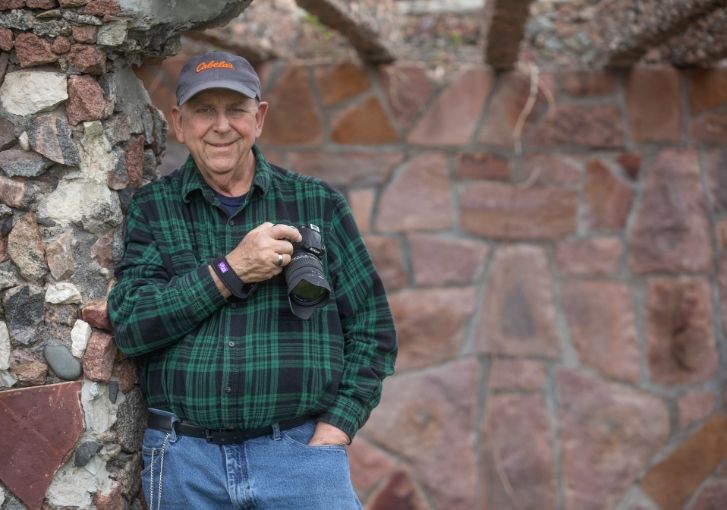Chuck Taylor was used to logging many miles weaving up and down the streets of Hartford, South Dakota, in search of the perfect photograph. He would travel all around town taking photos of the beautiful nature he saw -– like flowers, bumblebees, butterflies and crickets.
But a couple of years ago, joint pain in his right knee started to accompany the familiar click of Chuck’s camera shutter. The pain built gradually, slowly worsening over time.
Choosing a new knee
Chuck adapted as well as he could, using a cane to help support his right knee, but this made it harder for him to carry photography equipment. The cane prevented him from nimbly adjusting angles or switching out lenses. Eventually, Chuck could only walk about 100 feet or less before needing to stop and rest.
“It wasn’t until I went to the doctor that I realized it wasn’t normal,” Chuck says.
Enlarge

Chuck Taylor
As Chuck’s joint pain worsened, an orthopedic surgeon at Sanford Health, started him on a cycle of fluid injections meant to supplement the fluid in his knee, helping to lubricate and cushion the joint.
While the shots initially alleviated Chuck’s pain, the relief was temporary. Pain would surge back even before the six-month mark, which was how long the injections were intended to last.
“It got to the point where I could only walk about 50 feet and then had to buck up my courage to get back to the house, because there was so much pain,” Chuck says. “And I realized at that point that I really had to have something done.”
Chuck discussed options with his doctor, including total joint replacement, which Chuck had done previously on his left knee in 2005.
“At first I wasn’t going to do it because I had adapted –- I was using a cane and getting along, but I decided that wasn’t good enough for me,” Chuck explains. “I’m a photographer and I wanted to be able to carry my equipment.”
Recovery and the new normal
After his knee joint replacement procedure, Chuck began the recovery process and was walking with assistance in just around six weeks.
Chuck worked with a Sanford Health outpatient physical therapist and his wife, Marjorie, to stay active. Because he showed strong progress, Chuck was recommended for the Bridging the Gap program at the Sanford Wellness Center. Bridging the Gap is a free, two-month program for joint replacement patients where they join an exercise specialist for group exercise sessions.
Chuck is an advocate for staying active during recovery, because it has helped him throughout the joint replacement process.
“You have to keep up with the exercises, because if you don’t you get stiff,” says Chuck. “I think it’s so important not to hibernate in the house.”
Continued exercise helps patients like Chuck find a health and fitness routine that works best for them and maintaining a new joint.
While he is still recovering, Chuck is already enjoying better mobility. Everyday tasks like accompanying his wife to the grocery store are no longer frustrating, painful ordeals.
“I can do a lot of things right here in Hartford,” Chuck says. “Because I can walk now, wherever I need to go.”
More
- Robotic-assisted surgery is option in hip and knee procedures
- Joint replacements offer pain relief with shorter recovery
- Knee replacement gives retired military vet new mobility
…
Posted In Health Information, Orthopedics
